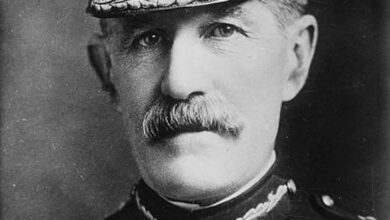Sausage Wedding Tradition: Exploring Its Origins and Meaning

The sausage wedding tradition is one of those cultural practices that sparks both curiosity and delight. While many wedding customs revolve around flowers, rings, or rituals of blessing, this one brings food—specifically sausages—into the spotlight. For some communities, a wedding feast is incomplete without this quirky yet meaningful ritual, where sausages symbolize far more than a simple meal. It is a practice that carries layers of history, symbolism, and a touch of humor that makes it unforgettable.
Understanding traditions like this is important because they reflect the values and creativity of a culture. Food has always played a central role in celebrations, representing abundance, prosperity, and togetherness. The sausage wedding tradition is no different—it transforms a simple delicacy into a symbol of unity and joy. In today’s era of globalized weddings, where trends are often borrowed and fused across cultures, exploring the roots of unique customs like this helps us appreciate diversity in its purest form.
This article dives deep into the origins, symbolism, and modern relevance of the sausage wedding tradition. From its historical beginnings to how couples today reinvent it, we’ll explore every angle of this fascinating custom. Along the way, we’ll also compare it to other food-centered wedding rituals around the world, showing how the act of sharing food has always been tied to love and community.
Historical Origins of the Sausage Wedding Tradition
The origins of the sausage wedding tradition are layered in history, with different cultures claiming some variation of it. In many European regions, sausages have been central to feasts and celebrations for centuries. They were seen not only as hearty food but also as symbols of prosperity, given that meat was once a luxury for common households. A wedding, being the ultimate celebration of union and abundance, was the perfect occasion to highlight this special dish.
In Central and Eastern Europe, particularly in places like Germany, Poland, and Hungary, sausages often appeared at wedding feasts. While not always a ritual in themselves, the emphasis on serving sausages became associated with good fortune and the hope for plentiful resources in married life. Oral histories and folk traditions suggest that some communities took it further—turning the sausage into an actual symbolic centerpiece of the wedding.
Over time, the tradition spread and adapted. In rural villages, sausages would sometimes be exchanged between families or even incorporated into playful ceremonies. They served as both practical sustenance and a humorous way to bless the couple with abundance. What began as a simple feast item gradually became a symbolic tradition that stood the test of time.
The historical roots remind us that food customs often evolve out of practicality before being infused with symbolic meaning. The sausage wedding tradition is a prime example of how a simple food item can gain ritualistic importance through generations of practice and storytelling.
Symbolism and Cultural Significance
At its core, the sausage wedding tradition is about more than just food—it is about symbolism. Sausages have long represented abundance, fertility, and prosperity. Their shape, ingredients, and preparation all carry connotations of unity, sustenance, and celebration. In many cultures, serving sausages at a wedding symbolizes the hope that the couple will enjoy a fruitful, abundant life together.
The symbolic significance often varies between communities. For some, the sausage represents fertility, making it an auspicious item to include in wedding rituals. For others, it reflects the importance of communal feasting, where sharing food is equal to sharing blessings. In rural traditions, the act of offering sausages to guests was seen as a gesture of generosity, ensuring that the couple’s married life would be equally full of kindness and hospitality.
Interestingly, the sausage also carries cultural humor. Weddings are joyful events, and rituals that incorporate food often include playful, lighthearted elements. In some traditions, sausages were used in games, symbolic dances, or as decorative items at the feast, creating an atmosphere of fun alongside the deeper meaning.
By examining the symbolism, we see how the sausage wedding tradition captures universal human desires: fertility, prosperity, abundance, and joy. It demonstrates how even simple foods can be elevated into powerful cultural symbols, reminding us that meaning is often found in the everyday things we share with others.
Rituals and Practices Involving the Sausage Wedding Tradition

The way the sausage wedding tradition is practiced varies depending on region, family, and cultural background. At its simplest, the tradition involves serving sausages as the centerpiece of the wedding feast. This can mean anything from presenting them on a decorated platter to incorporating them into elaborate multi-course meals. In such cases, the ritual is less about the act itself and more about ensuring sausages are present as a symbolic blessing.
In other variations, the ritual is more performative. For example, in some communities, the bride and groom might exchange sausages as gifts, symbolizing their willingness to provide for each other. In others, sausages might be handed out to guests as tokens of good fortune, ensuring that everyone shares in the abundance. There are even playful practices where sausages are incorporated into dances, games, or humorous skits performed at the wedding reception.
Family involvement is central to the tradition. Parents or elders often play a role in preparing or presenting the sausages, emphasizing the passing down of blessings from one generation to the next. Guests, too, participate in the celebration by partaking in the sausage feast, making the ritual a communal experience rather than a private one.
Attire, music, and other foods often accompany the sausage ritual, giving it a festive and cultural flair. These practices highlight how traditions are not isolated acts but woven into the broader fabric of celebration. The sausage wedding tradition, in all its variations, reinforces the themes of unity, sharing, and joyous abundance.
Modern Adaptations and Contemporary Relevance
In today’s world, where weddings often blend cultural traditions with modern creativity, the sausage wedding tradition has found new life. Couples are increasingly seeking ways to personalize their ceremonies, and food-centered customs are an appealing option. The sausage, once a rural staple, now becomes a quirky and memorable element in weddings that embrace both heritage and humor.
Some couples incorporate sausages as part of themed wedding feasts, offering gourmet versions that reflect modern tastes. Others revive the tradition in symbolic ways, such as presenting a sausage platter during the reception or creating playful sausage-inspired decorations. Social media has further amplified the tradition, with photos and videos of sausage-themed wedding moments often going viral for their uniqueness.
In multicultural weddings, the sausage tradition can be adapted alongside other customs, creating a fusion of practices that celebrate both families’ backgrounds. This flexibility ensures that the ritual continues to resonate with modern couples while honoring its historical roots. It also allows the tradition to evolve in ways that feel authentic to contemporary values, such as inclusivity, humor, and personalization.
What makes the sausage wedding tradition relevant today is its balance of meaning and fun. It reflects timeless themes of abundance and unity while offering a lighthearted element that makes weddings memorable. In a world where traditions are constantly being reimagined, the sausage wedding ritual stands out as one that continues to bring joy, laughter, and symbolism to modern celebrations.
Global Comparisons: Food and Marriage Rituals Around the World
The sausage wedding tradition is not alone in using food as a symbolic part of marriage ceremonies. Around the globe, countless cultures incorporate food into their wedding customs, highlighting its universal role as a symbol of life, abundance, and connection.
For example, in Italy, wedding feasts often feature bread and wine as symbols of prosperity and unity. In India, sweets such as laddoos or barfi are distributed to guests to signify joy and new beginnings. In Chinese weddings, dumplings symbolize wealth and good fortune, while in Greece, honey and almonds are offered to represent fertility and sweetness in marriage.
Comparing these traditions reveals a common thread: food is not just nourishment but a cultural language of blessings. The sausage wedding tradition fits seamlessly into this global pattern, showcasing how communities across the world use food as a powerful metaphor for love and abundance.
By looking at these comparisons, we can appreciate the uniqueness of the sausage tradition while also recognizing its shared values with other cultures. Food-centered rituals remind us that while weddings may look different around the world, they are united by the universal desire to celebrate love, prosperity, and community through shared meals.
Conclusion
The sausage wedding tradition is more than just a quirky ritual—it is a celebration of abundance, unity, and cultural creativity. From its historical roots in European feasts to its symbolic interpretations and playful practices, the tradition has evolved into a meaningful yet fun custom. Its ability to adapt to modern weddings shows its enduring relevance, reminding us that traditions thrive when they blend heritage with contemporary expression.
At its heart, the sausage tradition demonstrates the universal role of food in weddings: as a symbol, a blessing, and a means of bringing people together. Whether served on a grand platter, exchanged as a token, or reinvented in humorous ways, the sausage carries with it centuries of meaning and joy.
In an age where couples are redefining what weddings mean, the sausage wedding tradition continues to stand out. It represents the timeless human desire to celebrate love through food, laughter, and shared abundance.
FAQs
What is the sausage wedding tradition?
It is a cultural practice where sausages are incorporated into wedding rituals or feasts, symbolizing abundance, fertility, and unity.
Where did the sausage wedding tradition originate?
It is believed to have roots in European cultures, particularly Central and Eastern Europe, where sausages played a central role in feasts and celebrations.
What does the sausage symbolize in weddings?
Sausages symbolize prosperity, fertility, abundance, and communal joy.
Do people still celebrate the sausage wedding tradition today?
Yes, some communities continue to practice it, and modern couples have also revived it in creative, personalized ways.
How has the tradition evolved in modern times?
It has adapted to modern weddings through gourmet feasts, playful presentations, and social media trends.
Are there similar food-related wedding traditions in other cultures?
Yes, examples include rice-throwing in Western weddings, sweets in Indian weddings, and dumplings in Chinese weddings.
Can couples personalize the sausage wedding ritual for their ceremony?
Absolutely—many couples adapt the tradition with modern twists to make it unique to their wedding.
You May Also Read: Hawys Lloyd Hughes



